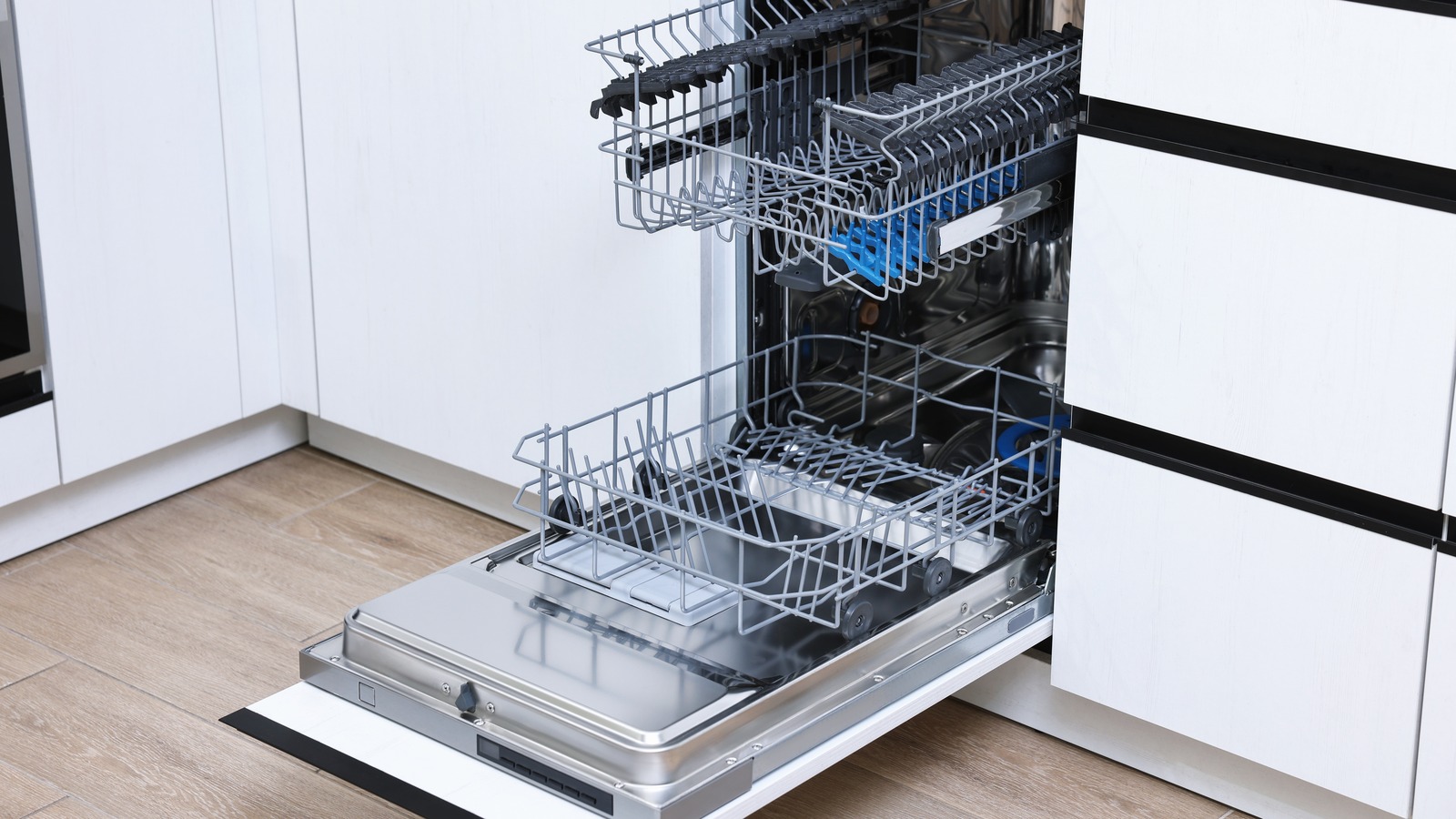Let’s start with a gentle disclaimer: Cooking in your dishwasher isn’t exactly endorsed by appliance manufacturers or professional chefs. It’s unconventional, a little ridiculous, and definitely not the most efficient way to get dinner on the table. But if you’re the kind of curious soul who looks at a hot, steamy machine and wonders, “Could I make a meal in there?” — you’re in the right place.
The premise is surprisingly solid. Dishwashers generate steady, low heat and a moist environment — basically the same conditions that make sous-vide so effective. And with the right gear — think zip-top bags, foil packets, or heatproof mason jars — you can prepare everything from jammy eggs to gently steamed fish, all while your plates get a rinse cycle.
Is this going to replace your oven? No. But is it a weirdly fun, impress-your-friends kind of kitchen experiment? Absolutely. Whether you’re meal-prepping with a twist or just want to see if your dishwasher can do more than one job at a time, these hacks will help you get started. Worst-case scenario, your food stays raw (in that case, do not eat it), but your silverware sparkles.
Use airtight bags for a DIY sous-vide setup
If you’ve flirted with the idea of sous-vide cooking but balked at the price tag on those sleek gadgets, your dishwasher might just be the chaotic workaround you never knew you needed. Granted, it won’t give you laboratory-level precision — but if you’re looking for a low-effort, low-temperature cook that retains moisture, you’re halfway there.
Sous-vide, which literally means “under vacuum,” is all about sealing food in an airtight bag and letting it bathe in consistent heat. A dishwasher can’t promise exact temperatures, but it can offer steamy, stable conditions that mimic a sous-vide bath surprisingly well. The key is using heavy-duty zip-top freezer bags or, better yet, actual vacuum-sealed bags that can withstand the heat of a full cycle.
Protein is your best bet here — think chicken breasts, salmon fillets, or even pork chops. Add a little marinade, squeeze out the air, seal the bag tight, and pop it on the top rack. Then, and this is important, run the cycle without detergent. Unless you’re really into that “lemon-scented salmon” experience (joking… please don’t!).
The results? Gently cooked, shockingly juicy food that didn’t require standing over a stove. It’s not a perfect replica of the real thing, but for an appliance that was designed to clean cereal bowls, it’s doing some pretty impressive side work. Just don’t tell your sous-vide snob friends where it came from.
Use mason jars for small, steam-friendly foods
If you’re looking to cook grains or finely chopped vegetables in your dishwasher, mason jars can be a surprisingly effective tool. These sturdy glass containers are designed to withstand heat and pressure, making them suitable for the steamy environment inside a dishwasher. Their durability allows for consistent cooking without the risk of melting or warping, unlike some plastic alternatives.
To use mason jars for dishwasher cooking, fill them with your desired ingredients — such as couscous, quinoa, or diced vegetables — and add the appropriate amount of liquid. Seal the jars loosely to allow steam to escape and prevent pressure buildup. Place them on the top rack of your dishwasher and run a normal cycle without detergent. The consistent heat and moisture will gently cook the contents, resulting in tender and flavorful dishes.
It’s important to note that while mason jars are heat-resistant, they are still susceptible to thermal shock. Avoid sudden temperature changes, such as transferring a hot jar directly into cold water, as this can cause the glass to crack. Allow the jars to cool gradually after the dishwasher cycle is complete.
Using mason jars in this unconventional way not only showcases their versatility but also offers a sustainable alternative to single-use cooking methods. Plus, it’s a fun and quirky approach to meal preparation that might just become your new favorite kitchen experiment.
Run multiple cycles for slower-cooking foods
When venturing into the world of dishwasher cooking, it’s important to recognize that not all foods are created equal in terms of cooking time. Dense items like root vegetables or bone-in chicken pieces may require more than a single dishwasher cycle to reach the desired level of doneness. While it might seem excessive, running multiple cycles can be the key to achieving tender and safely cooked results.
The consistent, low-temperature environment of a dishwasher is ideal for gently cooking certain foods. However, for thicker cuts or denser vegetables, a single cycle may not provide sufficient heat penetration. By running a second cycle, you ensure that the internal temperature of the food reaches a safe level, reducing the risk of undercooked meals.
To monitor the cooking progress, it’s really important to use a food thermometer to check the internal temperature of meats, ensuring they reach the recommended safe temperature. This practice not only guarantees food safety but also helps in achieving the desired texture and flavor.
Remember, while dishwasher cooking is an unconventional method, attention to detail and patience can yield surprisingly satisfying results. Just be prepared for a longer cooking process when dealing with heartier ingredients.
Foil packets make perfect steam pockets
Triple-wrapping your dinner in aluminum foil and tossing it into the dishwasher may sound like culinary chaos, but it’s shockingly effective. With the right ingredients and a tightly sealed pouch, you can use your appliance’s heat and steam to gently cook everything from salmon fillets to sliced bananas (yes, really).
The process is simple: Lay out your protein or produce, season as desired, and wrap it tightly in three layers of heavy-duty foil. This not only locks in flavor and moisture but also creates a protective barrier against any splashy intrusions from the rinse cycle. The key is a tight, leak-proof seal — dishwasher water does not pair well with dinner.
Set the packet on the top rack, skip the detergent, and let the machine do its thing. As the cycle runs, the ambient steam inside the foil slowly cooks the food, producing results that are closer to a steam oven than you’d think. Bonus: There’s practically no cleanup afterward.
This hack isn’t just great for tender fish or quick-cooking veggies — it also works surprisingly well for warm fruit-based desserts. So whether you’re clearing a crowded oven or just in the mood for a little culinary mischief, foil packets make for a low-mess, high-reward experiment.
The bottom rack can be a heat boost
Not all dishwasher real estate is created equal. If you’re aiming to get a little more oomph out of your culinary experiment, the bottom rack is where the heat lives. Positioned closest to the machine’s heating element, it’s the steamy underworld of your appliance — and that’s exactly what you want when tackling thicker cuts of meat or anything that needs an extra push toward doneness.
While the top rack is gentler and ideal for more delicate foods, the bottom rack offers higher temperatures and more direct exposure to steam. That extra intensity can help ensure denser foods like chicken thighs or root vegetables actually cook through in a single cycle (or at least get a head start). It’s not quite the blast furnace of an oven, but in dishwasher terms, it’s the hot seat.
The usual rules apply here: Triple-wrap everything in heavy-duty foil or use heat-safe containers to protect your food from splashes. And, of course, skip the detergent. Nobody wants their dinner with notes of lavender rinse aid.
Strategic placement can make all the difference when your cooking method relies on a glorified dish bath. Use the bottom rack wisely, and you might just level up your dishwasher dining results one steamy cycle at a time.
Try eggs for soft or jammy results
Cooking eggs in a dishwasher might sound like a culinary dare, but it’s a surprisingly effective method for achieving soft-boiled or jammy textures without the need for stovetop monitoring. The consistent low heat and steam environment of a dishwasher provide an ideal setting for gently cooking eggs to perfection.
To try this method, place a whole egg in a heatproof glass jar, such as a mason jar, and fill it with water. Seal the jar tightly and position it on the top rack of your dishwasher. Run a standard cycle at approximately 60 C (140 F) without detergent. The gentle heat will slowly cook the egg, resulting in a tender white and a creamy yolk.
Alternatively, for a more scrambled approach, crack an egg into a jar or foil cup, whisk it lightly, and follow the same process. This technique allows for easy customization with added ingredients like herbs or cheese.
It’s important to note that results may vary depending on your dishwasher’s settings and cycle duration. Experimentation may be necessary to achieve your desired level of doneness. Always ensure that eggs reach a safe internal temperature to prevent food-borne illness. This unconventional method offers a hands-off approach to egg preparation, freeing up your stovetop and adding a touch of novelty to your cooking routine. While it may not replace traditional methods entirely, it’s a fun and quirky alternative worth exploring.
Stack multiple items for a full ‘meal prep’ session
Once you’ve wrapped your head around the idea of using a dishwasher to cook, the next logical step is to scale up — and that’s where meal prep comes in. By strategically stacking jars, foil packets, and carefully positioned ingredients, you can prepare multiple dishes at once, turning a single cycle into a full-blown cooking session.
The top rack is perfect for lighter fare: Mason jars filled with couscous, chopped veggies, or cracked eggs come out nicely steamed. The bottom rack, being closer to the heating element, is your go-to for foil-wrapped proteins like chicken thighs or salmon. Not only do you get different heat zones, but you also maximize every inch of space — a multitasker’s dream.
To pull this off successfully, think like a Tetris master. Don’t overcrowd, and make sure everything is sealed properly. Skip the detergent (as if this needs mentioning again), and avoid cycles that include drying heat bursts, which can overcook more delicate items. Run a standard cycle and let the dishwasher’s natural steam do the heavy lifting.
This approach isn’t about perfection — it’s about efficiency, curiosity, and maybe just a little bit of chaos. By the end of one cycle, you could have grains cooked, veggies softened, and protein gently steamed, all without touching a single burner. Who knew your dishwasher had such range?





